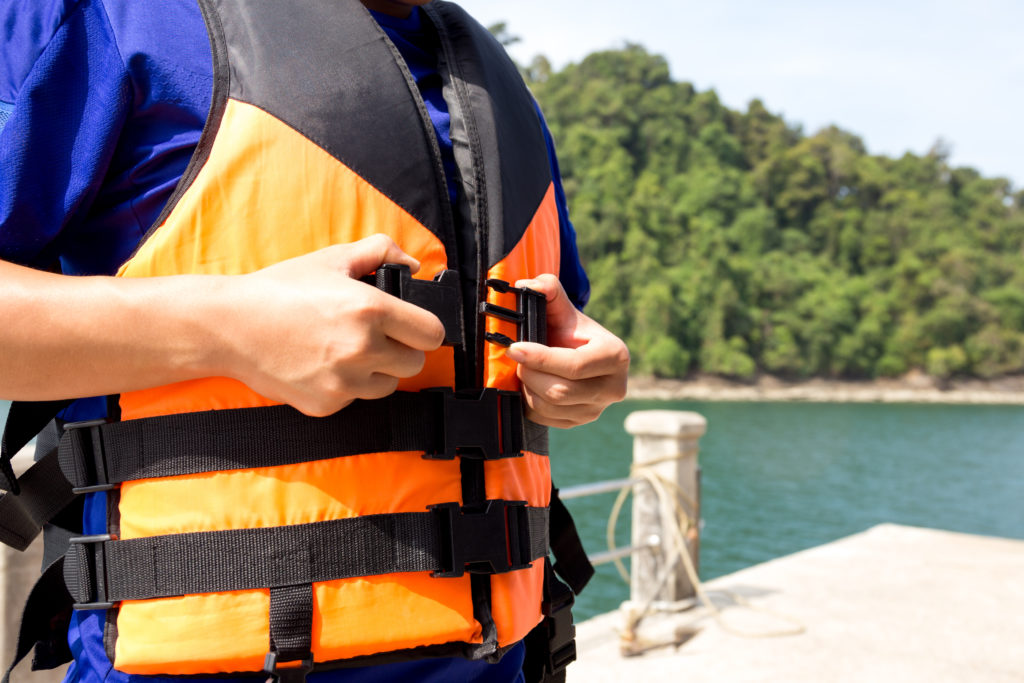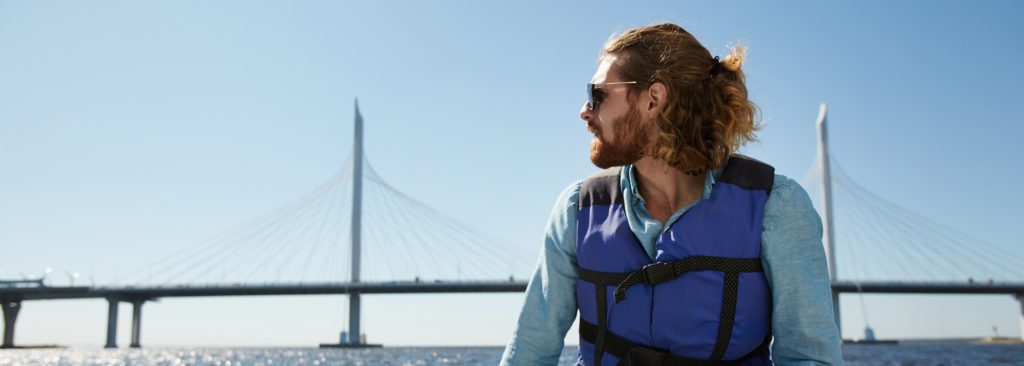Table of Contents
Should I Get an Orange Life Jacket?
There’s nothing better than spending a summer day in the water. Whether you’re swimming, wakeboarding, kayaking, or jet skiing, there’s one accessory that goes perfectly with shimmering blue water – that’s right, it’s the classic fluorescent orange life jacket. If you’ve ever been near the water, you have probably seen or even worn this iconic safety equipment.
You may be wondering if getting a life jacket is worth it. Sure, everybody says you should always be prepared, but they’re definitely not fashionable. They take extra time to put on and off, and they don’t feel very comfortable. Keep an open mind and read on, because in this article, we will talk about the pros and cons of wearing life jackets, and let you know if you really need one.
Life Jackets 101
Also called a life vest, it is a personal floatation device that is designed to keep you above the water in an emergency. Life vests have two main ways of keeping you afloat. The first is using inherently buoyant material. This classic style uses styrofoam, for example, which will float up to the top of the water (and bring you along for the ride).
Modern technology has also given us inflatable life jackets. These have an air bladder inside that you can fill up, and are less bulky than their foam counterparts. Although they provide greater buoyancy than foam life jackets, the downside is that you have to inflate them yourself, which can be a challenge in an emergency.
If you want the best of both worlds, look for a hybrid life vest. These will give you both inherently buoyant foam and an inflatable air bladder.
Types of Life Jackets

Not all life jackets are the same. After you’ve decided on a foam or inflatable life vest, you should see what safety rating they have. There are three classes of life jackets (based on how much buoyancy they provide), as well as how successfully they keep your head above water.
Type 1 Life Jackets
These look like a foam plank with a hole in the middle for your head. You might have seen them on a cruise ship or other large commercial boats. These are definitely the most bulky and cumbersome life jackets, but they are designed with a very specific purpose — to keep your head above the water, even if you’re knocked unconscious. If you are going into dangerous waters, or if you are not near a lifeguard, these are arguably the most secure. For adults, Type 1 foam life jackets offer 22 lbs of buoyancy, and inflatable life jackets have 33 lbs.
Type 2 Life Jackets
This is where your personal floatation device starts to look like a jacket. Type 2 life vests are significantly more comfortable, but still rather safe. Although they do not guarantee keeping your head above water, they will make it much easier to stay afloat. For inherently buoyant models, Type 2 life jackets offer 15.5 lbs of buoyancy. However, inflatable versions keep their 33 lbs rating.
Type 3 Life Jackets
These are the life jackets that are most common for playing water sports. They are the easiest to maneuver in, and still offer reasonable amounts of safety. These life jackets are not designed to keep an unconscious person’s head above water, but are still invaluable in giving you extra time and saving your energy during emergency situations. Type 3 adult life jackets are rated at 15.5 lbs of buoyancy for foam models, and 22 lbs for inflatable versions.
Do You Really Need a Life Jacket?
The blunt answer is yes. They are a necessary piece of safety equipment. “Life” is in the name! Whatever your reason is for not having/wearing one, there are plenty of reasons why you should.
“I’m a really good swimmer.”
You could be an Olympic gold medalist, but if you get knocked unconscious, all that experience is for naught. Hitting the water head-first may cause a concussion, which can leave you helpless. Type 1 & Type 2 life jackets are designed to keep your head above water, even when you’re not awake.
“They’re uncomfortable and get in the way.”
We understand that the more secure a life vest is, the more cumbersome they can be. The first question to ask yourself is, is that worth risking your life? But if you want to ride your jet ski or go kayaking and you need your freedom of movement, then opt for a Type 3 life jacket that will give you the right balance between safety and range of motion.
“Nothing has happened to me yet.”
Congratulations, you’ve been lucky so far. But the reality is that nobody plans on having an accident. When your luck runs out, you will be so grateful that you had that iconic black and orange life jacket strapped on and buckled securely, and that you made it back to shore safe and sound.
Bottom Line
If you’re going near the water, you really need a life jacket. The orange and black life jacket is a classic for a reason: it makes you easy to find, keeps you warm, and helps you keep your head above water long enough to get rescued. Find one that suits your planned activities and location, and wear it every time. Don’t let an emergency turn into a tragedy.


